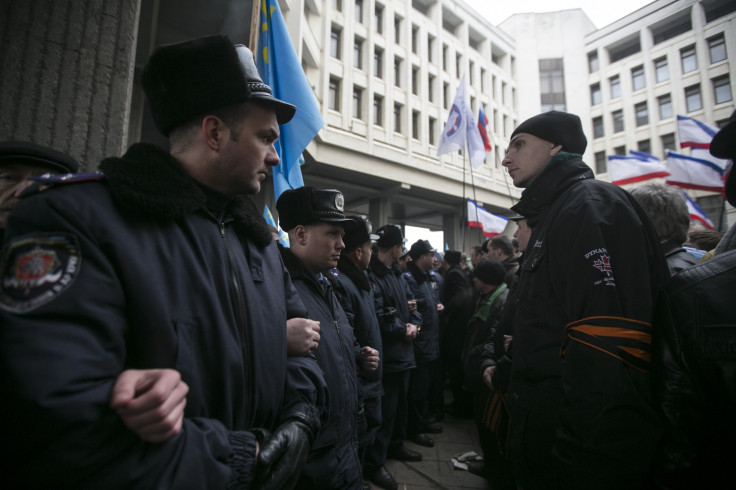Ukrainian Video Shows Armed Russian Military Troops Crossing The Crimea, But Where Are They Going?

A video allegedly showing Russian trucks carrying troops through the Crimean Peninsula of Ukraine from the port of Sevastopol to the nearby coastal town of Yalta on Wednesday has been widely reported as an act of aggression and proof that Russia may be ready to intervene in the region.
Analysis of the video shows that a truck and a stationary vehicle at the 0.39-second mark have license plates from the Crimea, and the plate on one truck seen throughout the video is Russian military, as is apparent due to the black license plate and Moscow registration (0217 HM 90).
Many Western media outlets have reported that the trucks were being driven to a military base in southeastern Crimea near Yalta. But the International Business Times' Russian translation shows that the sign to the entrance of the purported military base, as shown in the video, is a sanatorium that Russian military personnel use to recover from sickness, so it would not be unusual to see soldiers coming in and out of the area.
The director of the sanatorium, Vladimir Klemeshev, claimed in an interview with the Ukrainian website Liga.net that the troops are unarmed and were brought in to deter vandalism and violence, and to protect the Russian occupants of the sanatorium should the violence in Kiev be replicated in the Crimea. Currently the sanatorium has 31 occupants, not including the soldiers, according to the director.
If Klemeshev's statements are true, it would discredit widely reported Western media claims of a Russian military buildup. But questions arise regarding Klemeshev's claims. If soldiers visit the sanitorium for rest and relaxation, or to recover from sickness, how might that fit with deterring vandalism and violence and protecting civilians? And how might those tasks be done without arms? Anyway, it is evident in the video that it is not true that the soldiers were unarmed. At the 1.10 mark, a soldier at the lower right of the video turns slightly and for less than a second a rifle can be seen hanging from his right shoulder.
So the speculation continues. But the presence of armed troops outside of Sevastopol, where Russia has 26,000 troops, is largely an unusual event.
It has also been alleged by many media outlets that Russia is ready to hand out Russian passports to the Crimeans, something they were accused of as far back as 2008 by London’s Telegraph newspaper. This is a move that Russia used to justify counter-invading South Ossetia in August 2008. Before the invasion by Georgia, Russia encouraged citizens living there to sign up for Russian passports. Under Russian constitutional law, Russian passport holders living outside of Russia are offered the same protections as those living within its borders, so when Georgia attacked South Ossetia, Russia felt justified to protect its citizens and launched a counter-invasion.
The placement of troops at the sanatorium could well be a precursor to that passport plan, but it also could be an attempt at protecting Russian assets in the region. It’s hard to tell, but what is certainly true is that those troops are Russian and armed.
© Copyright IBTimes 2025. All rights reserved.






















